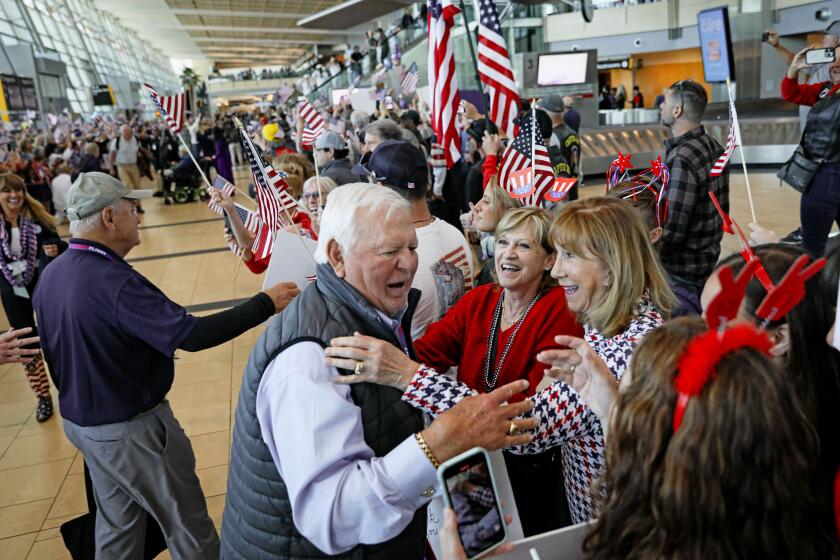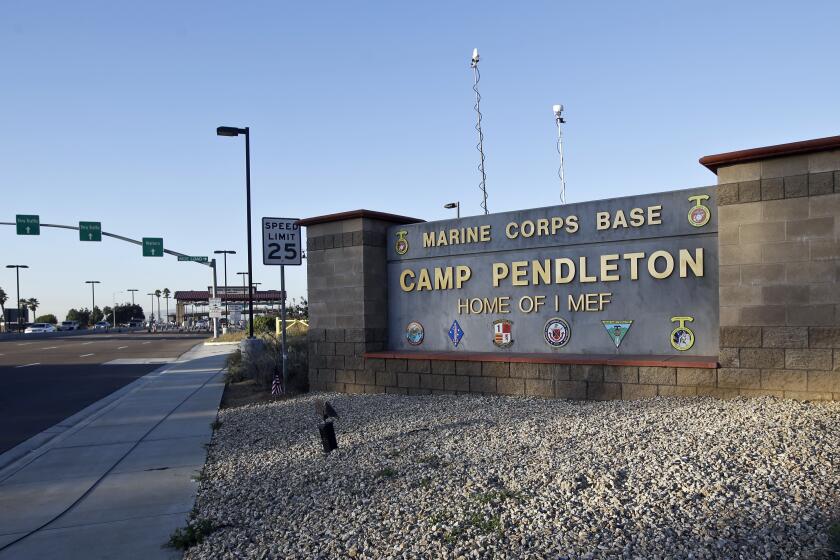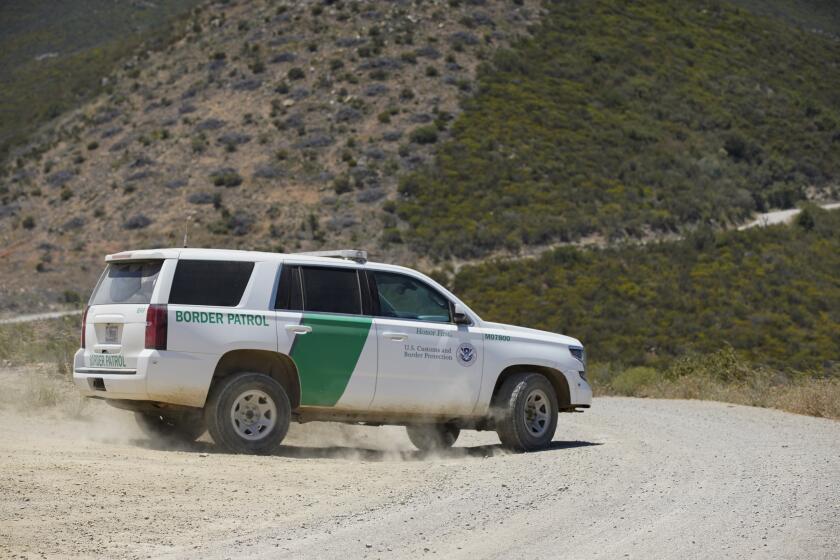Growth spurt at S.D. national cemetery
New Miramar National Cemetery director says rough spots will be smoothed
Just six years after opening, Miramar National Cemetery is now the seventh-busiest veterans cemetery in the United States, prompting an upgrade of the director’s position that might mean more stability in what’s been a revolving-door job.
New Director Rex Kern said the region’s second veterans cemetery has experienced growing pains, leading to a less-than-polished look.
The 56-year-old Navy veteran said his goal is to smooth out the bumps to shore up the “national shrine” status that is the yardstick for all U.S. Department of Veterans Affairs cemeteries.
OPEN HOUSE
Miramar National Cemetery will hold an April 6 open house for the public to meet the new director, Rex Kern, and tour the property.
WHEN: 10 a.m. to noon
WHERE: Miramar National Cemetery, 5795 Nobel Dr., San Diego
“As this facility grows, the burial rate grows with it,” said Kern, who took the director’s job March 1 after it was upgraded to a higher rung on the civil service ladder, an acknowledgment of the amount of activity.
Presently, more than 4,000 people are being laid to rest in San Diego veterans cemeteries each year.
“There’s going to be a lot more work here,” Kern said, from his office overseeing the sweeping Miramar property.
Nationally, the VA asked for a 5 percent increase in the 2017 National Cemetery Administration budget as it continues a building spree to expand access to burial.
It’s the largest growth spurt since the Civil War for veterans cemeteries, driven by the death rate of World War II, Korea and Vietnam vets.
The request for $286.2 million will underwrite construction of two new national cemeteries, in western New York and southern Colorado, and additions to properties in Jacksonville, Fla., and Southern Florida.
Miramar, which opened in 2010 and accepted its first casket burial in April 2011, is 313 acres carved out of brush-covered hills on the western edge of Miramar Marine Corps Air Station. The first phase cost $23 million.
It was built after a long lobbying effort by San Diego County veterans who were unhappy about the lack of nearby national cemetery space for burials.
Iconic Fort Rosecrans National Cemetery, with sweeping ocean views from atop Point Loma, is out of real estate. It has been closed to most caskets since 1966. The last open niches for urns were spoken forl as of May 2014.
Still, Rosecrans usually wins the popularity vote over Miramar.
The foundation that fought for the additional cemetery praised the new director.
“Our board of directors is extremely pleased to have Rex, with his extensive operational experience, here in San Diego,” said Dennis Schoville, president of the Miramar National Cemetery Support Foundation.
Kern, who oversees both properties in his new job, acknowledges his public opinion challenge with Miramar.
“Obviously, we are a new facility. People like Fort Rosecrans more,” Kern said. “So I’m trying to promote Miramar and let them know this facility can be just as prestigious as Fort Rosecrans in future years. These are hallowed grounds.”
During a recent tour of the Miramar, the 56-year-old Navy veteran pointed to tall brown fences that wall off temporary equipment storage. Also, construction vehicles have worn dirt trails through the natural landscape.
As the backdrop for graceful rows of headstones, it’s not exactly pretty.
“We still have some areas that, in my opinion, look kind of rough,” Kern said. “That’s what we are going to concentrate on.”
One new addition will be a 30-foot bell tower slated to become a visual focal point of the property.
Called a carillon, the Veterans Tribute Tower will house a 250-pound bell that can be tolled by hand or electronically. It will also play patriotic music for ceremonies.
It’s a $400,000 project by the Cemetery Support Foundation. An unnamed Korean War veteran from San Diego contributed the bulk of the money and wants the tower dedicated to his Army unit.
The VA has already accepted the design, and the Marine Corps has it under consideration, said Bill Heard, foundation spokesman. If approved, the tower will be dedicated as early as this summer.
Kern comes to the San Diego job after serving as director of the 115-acre Los Angeles National Cemetery for less than two years. Prior to that, for five years he managed veterans cemeteries across Louisiana and Mississippi.
San Diego is a return journey for him.
The Kansas native once served on two destroyers assigned to San Diego Naval Base, including a deployment to the Middle East for Operation Desert Storm.
An enlisted Navy storekeeper back then, Kern was injured falling off a ship’s ladder in heavy seas. He was forced to accept a discharge and a disability rating.
That landed him at a VA doctor’s office, his first brush with the huge federal agency. But it was when his father, also a Navy veteran, died and was buried at Fort Leavenworth National Cemetery that Kern saw his future path.
“The moment I came in there, I was just amazed at how it looked. The headstones. Just the whole appearance of the facility,” Kern said.
Later, when he started working at Leavenworth as a cemetery representative, he could see his father’s grave from his desk.
“I liked serving my country, and because of my injury I couldn’t do that anymore. My thing is, I want to make a difference at this point, for what is the last benefit the veteran will ever use,” Kern said.
“It’s near and dear to me because my father is buried in a national cemetery. So, every cemetery I have managed, I want to make sure it’s dress-right-dress,” he said, referring to the military term for troops lining up in formation.
A VA employee for 15 years, Kern said San Diego may be his last post. The upgrade of the director’s position means it is more of a destination job, where senior people will likely stay, he said.
Since 2011, directors have come and gone. Kern’s predecessor, Doug Ledbetter, moved on to lead Dayton National Cemetery in Ohio, his home state, after being in San Diego less than three years.
Get Essential San Diego, weekday mornings
Get top headlines from the Union-Tribune in your inbox weekday mornings, including top news, local, sports, business, entertainment and opinion.
You may occasionally receive promotional content from the San Diego Union-Tribune.








